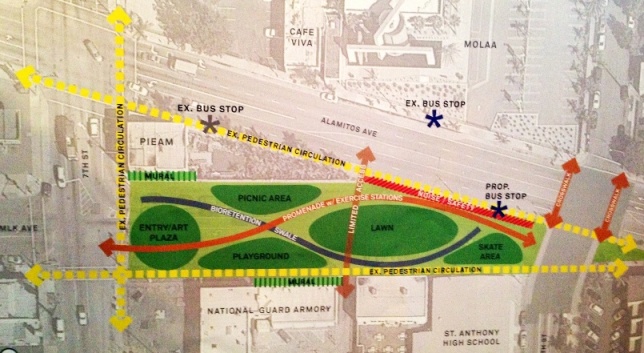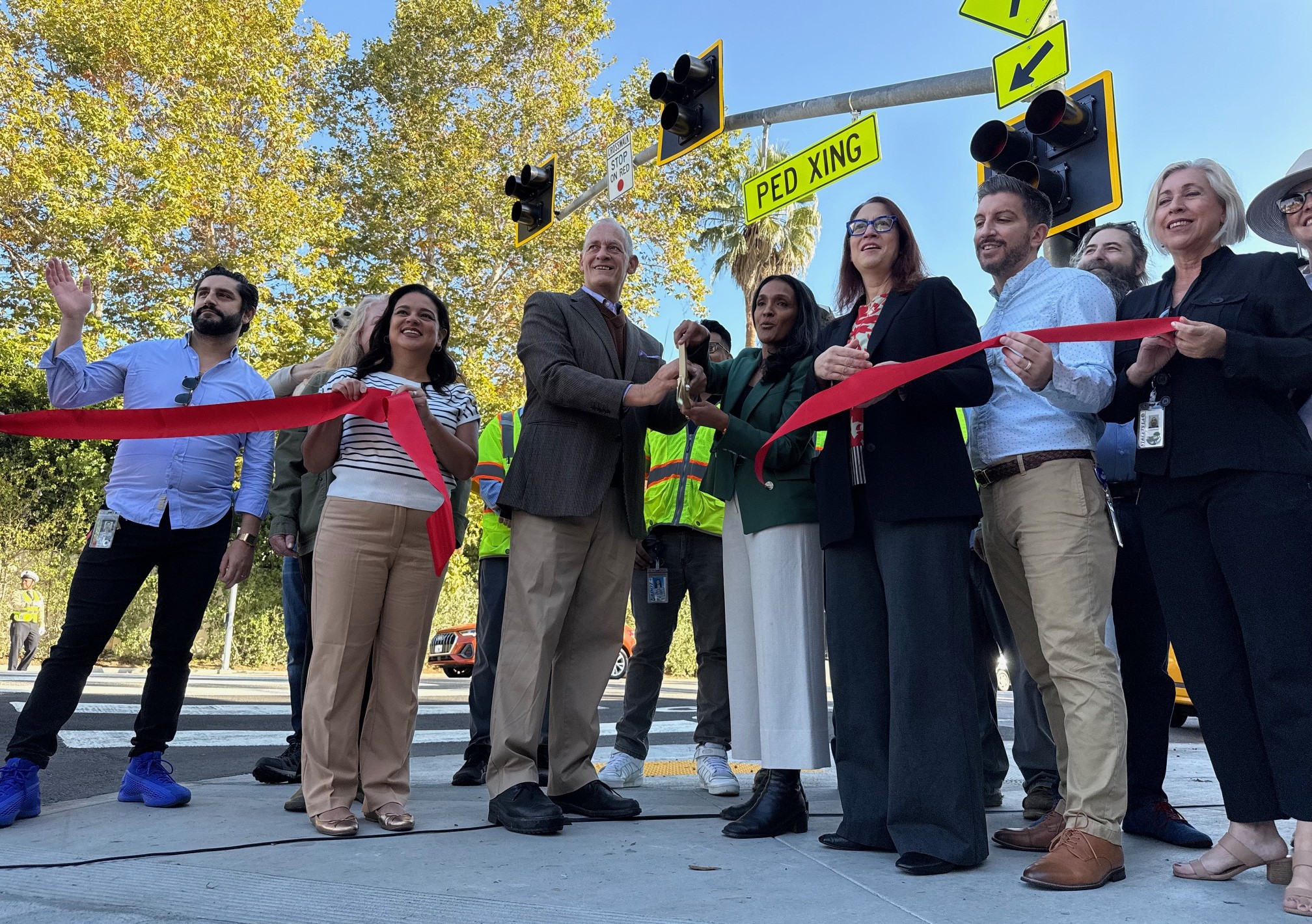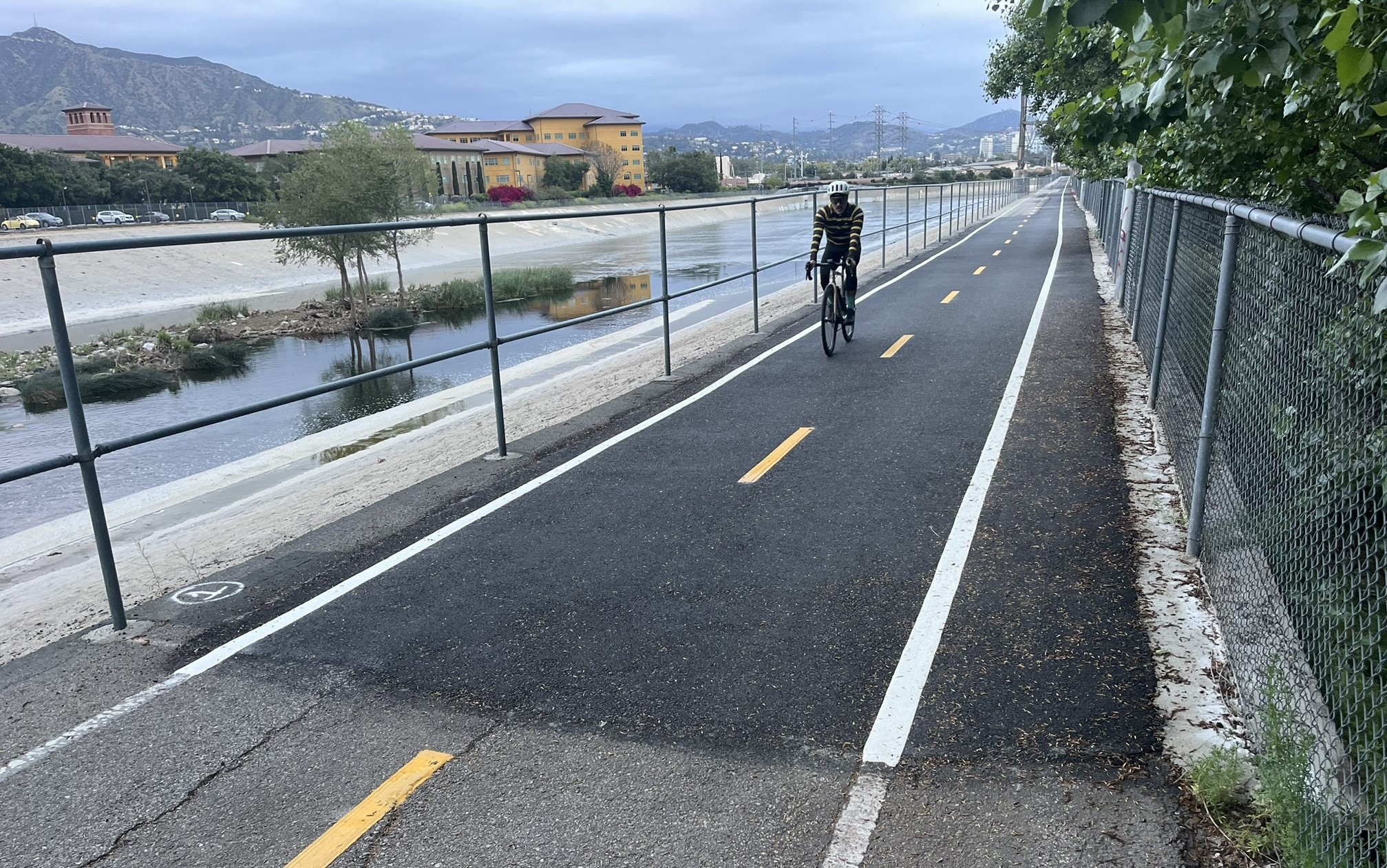The final meeting regarding the proposed Armory Park near 7th and Alamitos brought forth vast traffic changes to the 7th and 6th passageways, while also raising basic community concerns about what the park will be and how it will function.
Originally developed by Brian Ulaszewski from nonprofit design studio City Fabrick back in 2007, Armory Park's overall concept is simple: get rid of the trisection of 7th Street/MLK/Alamitos, the city's most dangerous intersection, by stripping away car accessibility on MLK and replacing it with green space and enhanced accessibility to the area's two museums, the Museum of Latin American Art (MOLAA) and the Pacific Island Ethinic Art Museum (PieAM).
After years of ups and downs, the AECOM-designed project — largely funded through two non-local resources, Prop 84 funds and CalTrans grants — will provide roughly .85 acres of park space in dense residential neighborhood that is entirely devoid of any park space within a 1/2 mile radius.
Traffic-wise, the new proposal has an interesting addition. Alamitos roughly marks the line where westward, streets become one-ways minus a handful of streets that still remain east-and-west connections.
This is, at least for City Engineer Dave Roseman, one of the many problems of the trisection: the convergence and divergence of one-ways and two-ways causes a massively convoluted transition for commuters. In his latest proposal, he will extend two-way traffic west of Alamitos until Atlantic in the hopes that people traveling eastbound on 6th will begin diverting to 7th via Atlantic instead of the current option of Alamitos. This extension of two-way traffic was not in the original proposal but was included due to many citizens' desires for traffic calming elements; Roseman believes this could be one of them.
Initially, such proposals — particularly in dense neighborhoods like North Alamitos Beach — are met mainly with complaints about the loss of parking spaces. Whenever I discuss my desires for eliminating a lane on Broadway between Junipero and Alamitos in order to expand the sidewalk and slow down traffic, the first question I always receive is: Will that eliminate any parking?
However, the community in addressing Armory Park was mainly concerned not about parking spaces — of the 236 spots within the area, the park's creation will only diminish 13 currently located in the footprint of the proposed park — but rather what the park will provide, both literally and conceptually. And what was ultimately reflected was not a group of citizens concerned about their cars but rather a community in deep need of a space that brings people together.
One mother was frank, asking if there will be a slide and swings because that's all her children need: a slide and swings — not a conceptual jungle gym-style arrangement. Another wanted to know about restroom access. A third wanted to include skateboarders in the design of the proposed skate area, while another wanted to emphasize the assets that MOLAA and PieAM provide, therefore making pedestrian access most important — not car accessibility.
And in the end, though many things still remain unclear, it wasn't frustration or counter-arguments that were expressed; if there was any unifying aura in the room, it was clear support — largely different than when the project was initially proposed.
“This would not have happened without the phone calls and emails of residents and dozens of community meetings. It is great to see those in the community involved over the past few years, now get to see the project coming to fruition,” said Ulaszewski.
Vice Mayor Robert Garcia, one of the largest supporters of the project, stated that they hope to break ground by the end of this year and hopefully open Armory Park by the end of 2014.







